Doctor Who: The Talons of Weng-Chiang
[DVD]
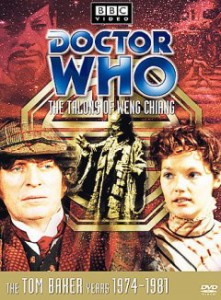
view/request
As a Doctor Who nerd and an admirer of several of the lead actors in this long running science-fiction series, it is difficult to come up with a favorite episode or story. One finds much of what is discussed on various websites, television programs, magazines, blogs… or real life conversations for that matter tend to fall under the categorizing or ranking of books, films, music, athletes, politicians, restaurants, etc. Is this need for placement really all that necessary? Must our filing cabinets extend throughout all of space and time?
Let’s just say, that the The Talons of Weng-Chiang from the Tom Baker era is a story that I really, really enjoy.
Robert Holmes, who was one of the more prolific and humorous writers of the Doctor Who enterprise, scripts an exciting adventure taking place in Victorian London. Our time traveling protagonist called “the Doctor” and his assistant Leela find themselves mixed up an other worldly, underground cult, battling a giant sewer rat and dealing with a scary looking puppet (I know, right?!!). The episode has a Sherlock Holmes motife: the vested Doctor is fully equipped with a long herringbone overcoat, a deerstalker hat and cravat. Furthermore, Holmes (this time I’m talking about Robert) playfully throws in several references to Conan Doyle’s writings.
The Talons of Weng-Chiang is an excellent introduction to Doctor Who if you’re unfamiliar with the series. The script is dynamite, there are memorable, comedic supporting roles and it ABSOLUTELY STARS THE GREATEST ACTOR TO PLAY THE DOCTOR. Busted… caught ranking, categorizing and picking favorites. I guess it’s just what we do.
Reviewed by Jason
Tagged: Humor, Science fiction, TV series
Girl Groups
[DVD]
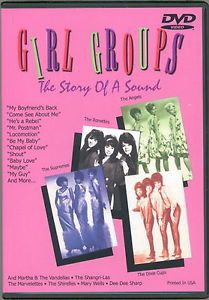
view/request
This rare, long out of print copy of Steve Alpert and Stephanie Bennett’s 1982 film provides a joyous glimpse into the history and development of the girl group sound. In addition to candid interviews with key figures like Darlene Love, Mary Wilson, Ronnie Spector, Arlene Smith and Ellie Greenwich, the film includes rare performance footage discovered by the filmmakers in the damp basement of a local TV affiliate in Windsor, Canada. These clips and performances by seminal groups of the era were originally aired on Teen Town, Detroit’s local version of American Bandstand. The film traces the history of the girl group sound from song writers in the Brill Building in New York to Motown and beyond, and includes clips of the Ronettes, Martha and the Vandellas, the Shangri-Las, the Marvelettes, the Angels, the Dixie Cups, the Shirelles, Dee Dee Sharp and a rare short color film of the Exciters bizarrely miming “Tell Her” in the general direction of lions and bears in a zoo. The film quality is certainly dated and shows it’s age in places, and a segment on the Supremes runs perhaps a bit too long (Motown required a minimum of ten songs to be featured for the rights to the Supremes) while other important groups are barely mentioned. All things considered, the interview segments and performances more than make up for these faults and the film stands as a valuable artifact of the times, and must viewing for fans of the Girl Group Sound.
Reviewed by Dylan
Tagged: Documentary, Pop music, Rock music, Soul music
An American in Paris
[DVD]
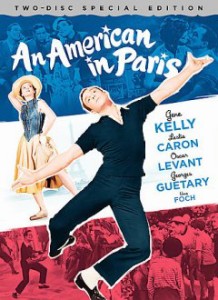
view/request
An American in Paris has long been one of my favorite films. Gene Kelly stars as Jerry, a charming if somewhat overly persistent American artist living in Paris. Oscar Levant plays another American, Jerry’s grouchy but endearing pianist friend Adam, and Georges Guetary plays the part of Henri, a French musical star who is friends with the two Americans. Adam and Jerry are perpetually broke, Jerry because he can’t sell his paintings and Adam because he hasn’t worked in years (he describes himself as the world’s oldest child prodigy). Many of the most charming scenes in the film take place in around the little cafe above which Adam and Jerry both live and which Henri frequently visits.
Early in the film Jerry meets the rich Milo Roberts (Nina Foch), whose professional interest in his work is a thin disguise for her hopes for romance. Jerry reluctantly accepts her patronage, but romantically he is more interested in Lise (Leslie Caron in her first film role), a young woman who, with time, becomes equally drawn to him but who is, though Jerry doesn’t know it, already engaged to Henri.
While the plot of the film is driven by these romances, the spirit of the film is driven by the music of George Gershwin. Gershwin’s music is used throughout the film: all of the songs are by George and Ira, the music for the sixteen minute ballet is an arrangement of Gershwin’s An American in Paris, and the remainder of the score draws heavily on these and other Gershwin compositions. We hear strains of Rhapsody in Blue and during a memorable dream sequence we are treated to a performance of the Concerto in F for Piano and Orchestra in which Adam performs not just on the piano, but on all the other instruments as well.
—And, of course, the dancing. The dancing in this film is incredible. The performances, the choreography, the costumes—there is no aspect of these dances that fails to impress. Gene Kelly and Leslie Caron are a perfect match; it is hard to imagine any other two dancers pulling off the required athletic grace or the perfectly balanced blend of ballet and popular dance styles showcased so well in this film. From the good spirited cheer of I’ve Got Rhythm and By Strauss to the sarcastic mocking of This Time It’s Really Love, and the earnest romance Our Love Is Here to Stay, to the passionate and diverse American in Paris ballet, these are dances you will remember and want to see again.
Reviewed by Ben
Tagged: Dance, Feature film, Musicals
Art 21
[DVD]

view/request
The Forbes DVD collection is impressive to say the least. One of my favorite sections is the Art documentaries that I regularly check to increase my knowledge and for inspiration. Being an avid reader of art in general and artists biographies in particular, I looked at the DVD ‘s for some visual candy.
I checked out Art 21: art in the twenty-first century, seasons 1&2 originally aired on PBS. The artists are grouped loosely according to themes (i.e. Place, Spirituality, Identity and Consumption) and shows them discussing their work, themes, and working styles. Being able to see how an artist created a work I was familiar with or discovering a new artist really kept my attention, led me to find books and other materials on a few artists and in some cases provided inspiration and a little push to work on my own projects. Naturally I didn’t like all the works, came away with favorites – Kara Walker, Collier Schorr, Vija Celmins – and found that it definitely was time well spent watching the artists that I didn’t particularly like or yet don’t understand.
Reviewed by Susana
Tagged: Biography, Documentary, Modern art, PBS
The Mighty Uke
[DVD]

view/request
Given the scores of people who have borrowed ukuleles from this library, it was time for me to watch a documentary on the uke. According to filmmakers Tony Coleman and Margaret Meagher, the humble ukulele (which means “jumping flea” in Hawaiian) is at the crest of a worldwide resurgence in popularity. Why? Well, it’s accessible, it’s cheap, it sounds pretty good right from the start, you can adapt a huge variety of music to it, and it’s small and easy to carry around. Who would have guessed, as our 1920s-era ukulele method books languished on the shelves since the last uke fad died out, that in the 21st century there would be ukulele clubs in every major city? Or that a virtuosic ukulele player (is ukulelista word?) would be hitting the pop charts?
Reviewed by Faith
Tagged: Documentary, Music, Ukulele
Cutter’s Way
[DVD]
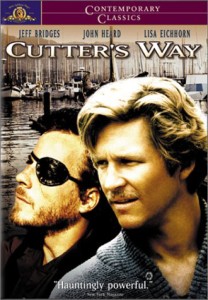
view/request
“These are just the facts, Rich. I mean, I haven’t even begun to let my imagination loose on this thing.”
A film about our first head librarian? Telling a tale of the creation of the Cutter System (the same system Forbes Library uses to this day)? I’m afraid not… though Dylan and I are working on the second draft of the Charles Ammi Cutter Story. In theaters 2039.
Rather, Cutter’s Way is a film directed by Czech New Wave pioneer Ivan Passer that stars Jeff Bridges and John Heard. Heard plays Alex Cutter, a one armed, one legged, eye patch wearing bitter Vietnam veteran who is on the verge of losing touch with reality. Side bar: I tend to get drawn to movies where a character wears an eye patch (True Grit, The American Friend (though Nicholas Ray really needed to wear one of those in real life), Kill Bill, Thunderball or any pirate film come to mind). Cutter lives his life with the feeling that he has nothing to lose and often exists in a drunken stupor without the will to live. Though his antics on some occasions are entertaining to his wife Mo and his closest friend Richard Bone (Jeff Bridges), most of the time he’s putting himself and others in danger.
Bone, a yacht salesman who doubles as some sort of refined-hippie-vagabond-couch-surfing dude, witnesses the disposing of a body after a murder. He decides to flee the scene and not get involved (not getting involved happens to be a central theme of Richard Bone), but winds up being questioned and finds himself on the front page of the paper. Cutter, in turn, becomes obsessed with this case and is convinced he knows who has committed the terrible act.
Cutter’s Way is an overlooked film that explores the limits of friendship and expertly combines the genres of drama, mystery, comedy, adventure and film noir.
Reviewed by Jason
Tagged: Drama, Fiction, Mystery
Birds of the Gods
[DVD]
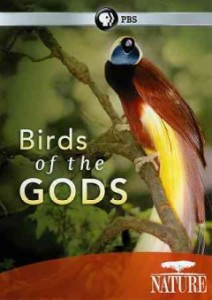
view/request
This 2011 DVD release of the latest beautiful and informative documentary from the BBC/Nature series captures the spectacular beauty of the native birds of New Guinea. In the 16th century European explorers named the gorgeous and elusive birds of the island “Birds of Paradise”. The local indigenous people have revered them for centuries and honor them as sacred ancestors by wearing their feathers as status symbols in elaborate headdresses during tribal ceremonies. This tradition, however, has made the more exotic and colorful birds’ feathers highly prized and, together with loss of habitat, has threatened the species’ survival and made them vulnerable to extinction. The ever-present BBC narrator David Attenborough introduces us to local biologists and conservationists, Miriam Supuma and Paul Igog, whose knowledge of the area and expertise guides us through the dense forests to document the elusive birds. The film does a good job of conveying the difficulty and challenges posed to researchers in the area, who must face incredibly difficult terrain, elusive and skittish subjects and are faced with centuries of local tradition and customs in their efforts to research and protect the birds of New Guinea. The joy of the researchers, when they do witness one of the elusive birds mating displays and dances, is palpable and infectious. The birds of New Guinea have evolved in relative isolation for thousands of years and have developed a wide variety of plumage, some with vivid iridescent blue and green coloring while others have tail feathers up the three times the length of their body. Overall, the film offers a satisfying, informative and visually captivating look at a corner of the world the viewer might not be familiar with and is a sure hit for birdwatchers and fans of nature docs alike.
Reviewed by Dylan
Tagged: Documentary, Nature
Paul Taylor, Dancemaker
[DVD]
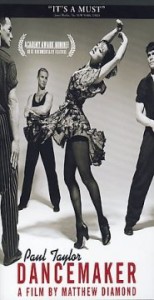
view/request
Paul Taylor is an innovative dancer and choreographer. He is known for his pioneering work in modern dance and his long career which began in the 1950s (he danced in Martha Graham’s company) and continues today. His choreography can be startling, beautiful, frightening, comical, serious, ornate, minimalist, and much else besides.
This documentary about Paul Taylor’s career focuses on the Paul Taylor Dance company as they prepare and perform a number pieces. We see the company rehearsing and performing, but best of all, we get to see Paul work with the company as he creates new dances. We are also treated to historical footage of Paul performing as a young man. The dancing is fantastic, and the portrait of this great artist is complex. This film is a great introduction to Paul’s work for those unfamiliar with it as well as a treat for those who have already grown to love the dances he creates.
Reviewed by Ben
Tagged: Dance, Documentary
Henning Goes to the Movies
by Henning Ohlenbusch
[Music CD]
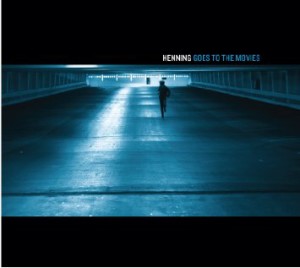
view/request
Please excuse the following burst of textual immodesty… Ahem. As founder and president (not to mention CEO, secretary, vice president & mascot) of the Forbes Film Club, I can safely say that I know a thing or two about the cinema. In addition, it was in college where I studied video and film, wrote lengthy ramblings dealing with issues within the worlds of documentary film and German cinema, composed pretentious screenplays and starred in some student produced shorts that feature poor lighting (often typecast as a chat show host, bud did sport a tricorne hat once for a period piece). I later found myself in Texas working in a video library/archive and spent most evenings devouring the collection and attending curated film festivals. To this day, little gives me greater pleasure than sitting in the theater, munching on popcorn and seeing something unfold on the big screen.
I have very personal connections to a handful of films and I believe movies we love can have a great impact on how we define ourselves. This is why Henning Goes to the Movies is so appealing.
Nine movies. Nine songs. Henning Ohlenbusch, lyricist extraordinaire/singer/songwriter of the group School For the Dead, is the architect (perhaps I should use director in this instance?) behind this wonderful album. He sings about the hilariously raunchy Super Bad, David Lynch’s quiet drama the Straight Story, the horror classic Poltergeist, the coming of age classic the Year My Voice Broke and more. His approach to these pieces is not a highlight of important plot points; rather he shares his personal experience with each film. Through introducing a specific character’s perspective or providing an overall sentiment of a movie, Ohlenbusch invites the listener to go on a cinematic journey.
His folksy pop songs are simply arranged to bring us close to the stories. He also tastefully sets the scene with appropriate backing. We find ourselves somewhere in the distant future in Logan’s Run with weaving backward electric guitar and at an old time carnival in Joe Vs. the Volcano. Though voice and acoustic guitar tend to be in the forefront throughout, keyboards, glockenspiel, subtle effects, electric bass, harmony vocals and percussion expand the mix.
This a great collection of songs, even without the movie theme. And I should mention that you really don’t need to have seen the films to appreciate the record. It is, however, even more of a gratifying listen for those of us who find that films are an important fabric of our lives.
Reviewed by Jason
Tagged: Film, Folk music, Pop music, Rock music
Twentieth Century
by Howard Hawks
[DVD]
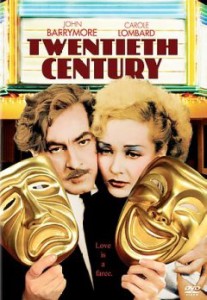
view/request
John Barrymore and Carole Lombard star in, what some site as the first screwball comedy, Twentieth Century. The film’s director, Howard Hawks, who delivered several box office smashes in the form of the more macho features (his credits include the original Scarface, Rio Bravo,the Big Sleep), was also adept to orchestrate the gut busting comedy piece. He later went on to direct other classics in this genre such asBringing Up Baby and His Girl Friday.
Sort of a silly version of the Red Shoes (though the film we’re discussing predates it), Twentieth Century presents a didactic relationship in the entertainment business. Oscar Jaffe, a Broadway producer played by Barrymore, casts an unknown to actress to play the lead in his newest production. This actress (brilliantly performed by Lombard) is put through the ringer and subjected to plenty of condescending exercises and verbal tirades by this larger than life figure. Despite his questionable methods and erratic behavior, Jaffe manages to mold this unknown into a household name. He also dictates that her household name shall be “Lily Garland”.
Once Garland has attained fame and fortune, she no longer needs the temperamental Oscar Jaffe in her life. As a result, the producer soon falls on hard times. Not only does he realize that he needs Garland back in his life for professional reasons, he discovers that he’s madly in love with the starlet! His crusade, at times devious, to win back her favor knows no bounds.
Barrymore’s portrayal of Jaffe, which is grandiose in one instant and hilariously pathetic the next, propels the story at a breakneck pace. Filled with slapstick gags and wild monologues, the actor gives one of the most memorable comedic performances committed to film.
Reviewed by Jason
Tagged: Comedy
Grateful Dawg
by Gillian Grisman
[DVD]

view/request
This film celebrates the musical collaborations of Jerry Garcia and David Grisman. The film, by David’s daughter Gillian, is an affectionate tribute to the music created when these two musical giants worked together. Garcia and Grisman shared a common enthusiasm for bluegrass and American roots music, but Grisman had a tight and disciplined approach to the music, while Garcia was well known for his relaxed attitude. Something special happened when they worked together, as Grisman loosened up, Garcia became more focused, and each took on some of the best qualities of the other.
This film isn’t particularly rich in storytelling, and it is nothing special to look at, but it contains some good interviews with Grisman, Garcia, and their many collaborators, including Vassar Clements and Peter Rowan of Old and in the Way. The real focus of the film, however, is the music, and the camaraderie between these great musicians, and that is how it should be. The film’s editors often made the unfortunate decision to show footage, often in slow motion, which doesn’t match the music being played, but this is easy to over look. All you have to do is close your eyes and listen—and listening to these two play together is a joy.
Reviewed by Ben
Tagged: Bluegrass, Documentary, Folk music
Under the Volcano
by John Huston
[DVD]
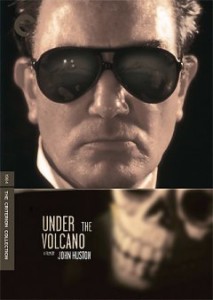
view/request
Albert Finney stars in one the last films by the prolific American director, John Huston. Under the Volcano is based on the semi-autobiographical novel by Malcolm Lowry.
Delusions and alcoholism are the central themes of this film. We join Finney’s character, Geoffrey Firmin, just after the Day of Dead fiesta in Mexico in 1939. Firmin, who is an alcoholic and bitter English consul, wanders throughout a beautiful Mexican village with his life spiraling out of control. Though he tries to pull himself together when his estranged wife (played by Jacqueline Bisset) stops for a visit, moments of clarity and decent behavior are few and far between.
Finney’s portrayal of this troubled character would most likely be over the top handled by another actor. He manages to create someone loud and belligerent, pitiful and charming on some occasions. We want him to dig himself out of this self-inflicted crisis, but we understand that he’s incapable. Huston paints this personal drama with the beauty of the Mexican village and also a strange wallpaper of supporting characters (including the director/writer/actor Emilio Fernández).
This Criterion Collection dvd has a painstakingly assembled bonus disc that profiles John Huston, provides behind the scenes footage and includes the film Volcano: An Inquiry into the Life and Death of Malcolm Lowry (narrated by the late Richard Burton).
Reviewed by Jason
Tagged: Alcoholism, Drama












